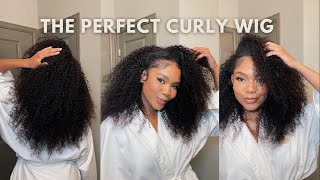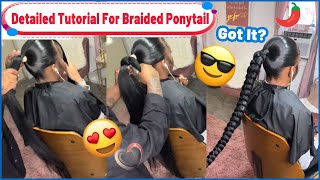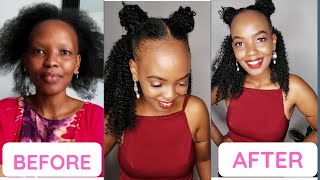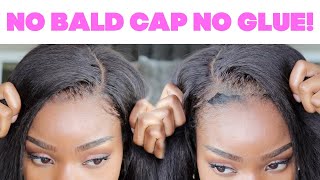The Truth About Caring For 4C Natural Hair And Achieving Your Hair Goals

Contents
- What is 4C hair
- 4C hair wash day
- Protective styling
- Choosing products
As I get older one of the things that hold true in my life is that there are no shortcuts when you want to be successful at any goal you might have. In my own hair journey, and I am sure in your journey may have found that the same mantra can be applied. On the years a met all my goals with my hair, I was consistent, I was focused and I really took care of my hair the best way I knew how.
The truth is that regardless of your hair type you have to have a set actions that you must consistently do to achieve your hair goals even if your goal is to have short healthy hair. 4C natural hair can be considered as ‘special’ depending on who you talk to but the truth is it is just curly hair that needs to be cared for in a certain way just like any other hair type.
Once you figure out what your 4C hair needs all you have to apply is the consistency and the focus pieces of the mantra we spoke about and you will have a successful hair journey.
In this post, I wanted to take some time to really look at 4C hair care and give you some insight on how you can take care of your 4C hair gaining health and of course length which is just an awesome side effect
What is 4C hair
If you look up the definition of 4C hair you will come across this paragraph:
Type 4a is tightly coiled hair that has an “S” pattern. It has more moisture than 4b and has a definite curl pattern. The circumference of the spirals is close to that of a crochet needle. The hair can be wiry or fine-textured. It is usually fragile with lots of strands densely packed together.
I saw a great video that gave the perfect visual of that description on Instagram created by @eclectic_vibez. Just in case you are more of a visual person check this out:
Crown crafted by God.
A post shared by ATRIBE CALLEDLES (@eclectic_vibez) on
Now that you have an idea of what 4C hair looks like then you will understand some of the recommendations we make on how to care for it.
4C hair wash day
When we talk to 4C naturalistas it seems as if most of the drama they describe tend to start on wash day and for most of us wash day is what we think about when we start our healthy hair journey.
For a 4c naturalista, you should have 3 main goals in mind
1. Maximizing your moisture and strength
2. Keeping your hair detangled
3. protective styling your hair for the week
In order to do these things always start with a pre-poo or end with a deep condition. When you pre-poo, you basically are deep conditioning* your hair prior to shampooing your hair so that you do not strip the hair with sulfates in the shampoo that are designed to clarify your scalp and hair.
If you are not much of a prepoo-er, then it is very important that you deep condition your hair after your shampoo and condition process. Whether you choose to pre-poo or deep condition the point is you want to get as much moisture and strength into your strands as possible.
Which leads us to truth number 1
4C hair thrives better when deep conditioned every single week! The texture and shape of the strand are more prone to dryness and tangles than any other hair type. Deep conditioning* is the easiest way to give your hair just what it needs every single week

Detangling
As we mentioned 4c natural hair is prone to tangles because the strands are naturally attracted to each other and love to wrap around each other creating knots. The best way to combat that is to always work in sections before you do anything else.
Section your hair neatly into 4-6 sections. It really helps to focus on your parts when sectioning your hair because it will make things so much easier for you as you go through your wash day.
Youtuber Kimmaytube had a neat parting trick she introduced to her audience in 2015 that I think is awesome for those of you who need a great parting hack. Watch below:
The second truth about 4C natural hair is that it tangles and you have to care for your hair in a way that avoids tangles in the long run.
Another great way to avoid tangles is by stretching your natural hair so that the strands are less prone to wrap around each other.
Stretching your natural hair can take a variety of forms that are considered healthy for your hair. You can use twists, braids, Bantu knots, the banding method or a blow dryer* on the cool setting to stretch your hair after washing it.
In the below video Kimmaytube does what she calls a mid-level stretch which is another hack you can possibly incorporate into your regimen for your 4c natural hair.
Watch below:
Protective styling
Protective styling for 4C natural hair is so important we had to bring it under its own category because when we talk to women who have long healthy 4c natural hair, protective styles are an integral part of their hair regimen. This is the third most important truth about 4C natural hair.
Protective styling is styling your hair in ways that protect the length of your hair including your ends. These days when we protective style we tend to think about fancy styles like, box braids, crochet braids and all sorts of styles that might actually cause damage to your edges and crown.
While some of these styles might be great some are really counter productive especially if they damage your hairline. When we talk about protective styles we are talking about basic styles like loose twists, two strand twists, flat twists, cornrows, mini twists and simple braids all of which are mostly done without added hair.
For effective 4c protective styling, you have to incorporate it for most of the week if not all week to reduce your manipulation and exposure of your ends. When you protective style your hair you also are able to retain moisture longer and you will retain more length.
The benefits of loose twists
Loose twists are one of the bet protective styles out there for 4C natural hair and one of our favorites to talk about here. Read this detailed post here.
Loose twists are simply miniature twists installed all over your head as a means of protecting your hair, and keeping the strands separated and largely detangled.
Most women who do this, tend to braid or twist tightly, the roots of their hair and loosely twist the length to keep the hair separated and organized.
With this base they style their hair for the week, they moisturize the twists and some women keep them in for 30 days or longer without much manipulation.
Watch West African Baby talk about her loose twists below:
Mini Twists
Mini twists are also a popular option for women who want to retain length without a ton of manipulation. These twists are simply small two strand twists that can be styled and manipulated as if your hair was out or fully loose.
Some women wear mini twists for 8 weeks at a time which is great for hair retention over time. Watch Mini Marley install her mini twists below:

Choosing Products
It is hard to talk about caring for your hair without some focus the subject of products because products are a critical part of our hair care.
If you have 4C hair that is dry it would be best to pick products that are hydrating and thick in texture. The fourth truth is 4C hair thrives best with products that have the highest quality ingredients tend to fit women with afro-textured hair.
Personally, I like to do a little DIY for my own hair because I can control what I use on my hair especially when I figure out ingredients what my hair loves.
We always recommend that you play a little kitchen beautician with at least two products, a great natural hair oil, and a great sealing butter.
Here is a list of products every 4C naturalista should have in her arsenal:
1. A clarifying shampoo
2. A sulfate free shampoo*
3. Thick moisture-rich conditioner that is cone free
4. A leave-in conditioner
5. A hair butter
6. A pure hair oil
Choose brands that really have your best interest in mind when they market products to you for purchase. Check their website to ensure they are using language that includes, moisture, strength, and your hair type. Check every ingredient list for parabens or harmful ingredients that do not support the health of your natural hair.
How to make your own hair butter
We have an oldie but goodie recipe that we published last year for a hair butter that I think you should try. This butter is great for overall health and hair growth and these are the ingredients:
100% Pure and Raw African Shea Butter
Cold Pressed Coconut Oil
Jamaican Black Castor Oil*
Sweet Almond Oil*
Aloe Vera Gel*
Maca Liquid Extract
Lemon Essential Oil
Electric Mixer
Tight-sealed plastic container or jar
How to make it:
▶︎ Take one cup of shea butter and drop it into a regular plastic bowl or the electric mixer bowl
▶︎ Then, take 4 leveled tablespoons of coconut oil and put it in the same bowl as the shea butter
▶︎ A teaspoon of sweet almond oil* and JBCO and drizzle it over all of the contents in the bowl
▶︎ Take a tube of aloe vera gel* and squeeze about a tablespoon in the mixture
▶︎ Take both the maca liquid extract* and lemon essential oil* and put in 3-4 drops each
▶︎ Whip all of the ingredients together with an electric mixer until it is whipped for 10 – 35 minutes
▶︎ Spoon the mixture into a plastic jar–one similar to a peanut butter or jelly container
▶︎ Store it away in a cool dry place
Final thoughts
4C natural hair is not hard to handle if you know what you are doing and what makes your hair tick once you have internalized the truths about it things get easier for you. Pretty soon you will be able to gauge exactly what you need to achieve every single goal you set for your hair.
Have you mastered your 4c natural hair? Comment below!




